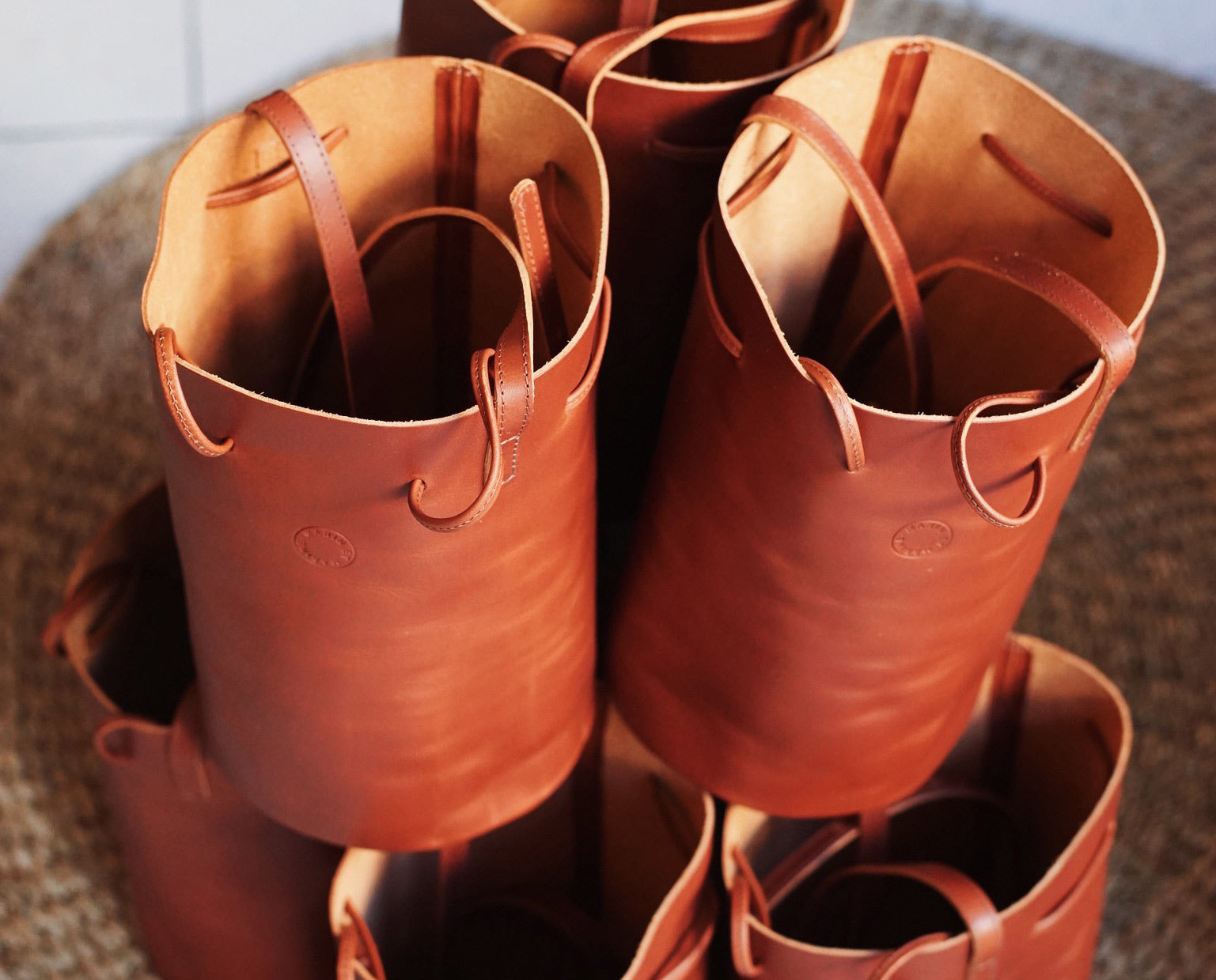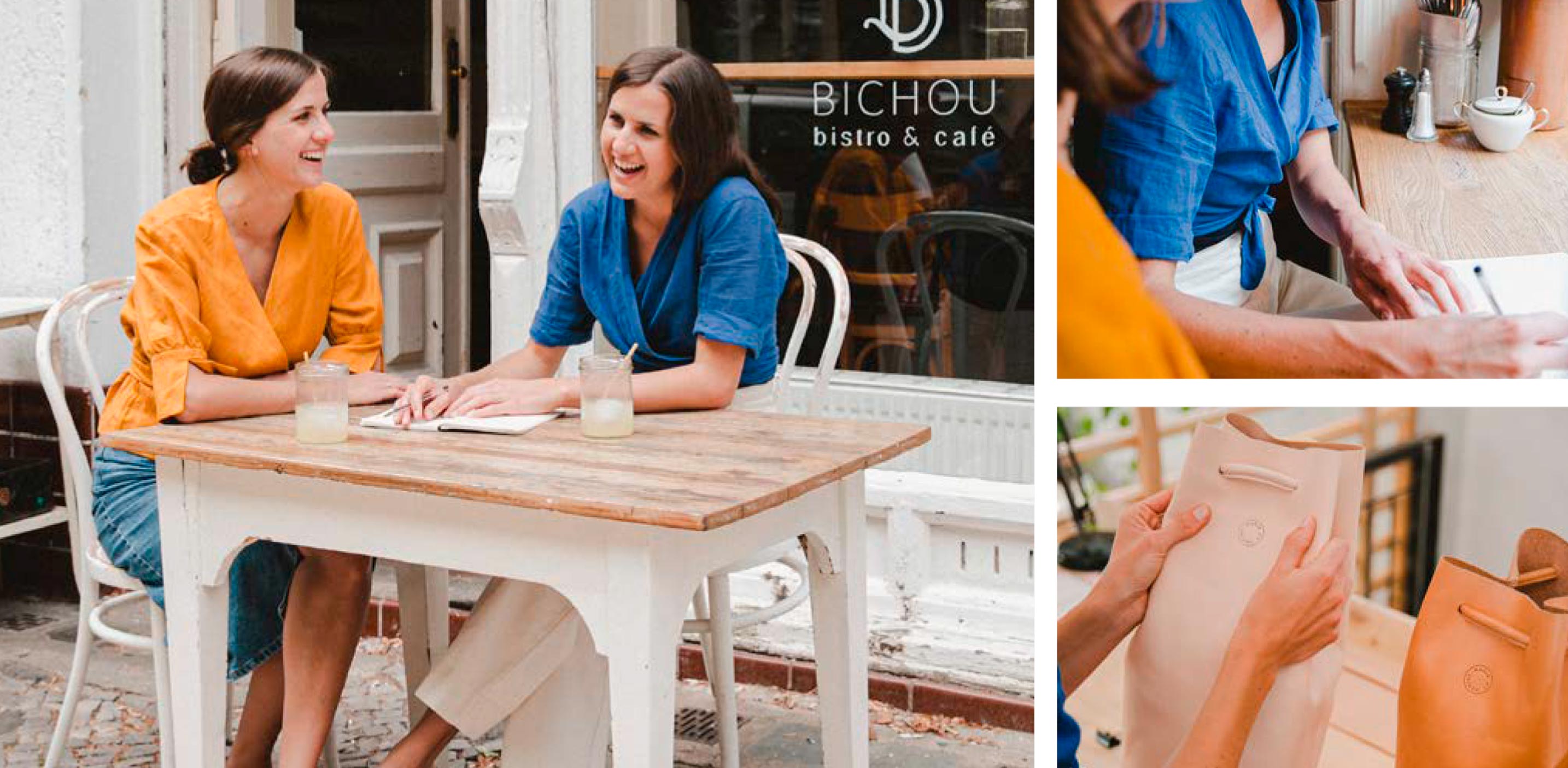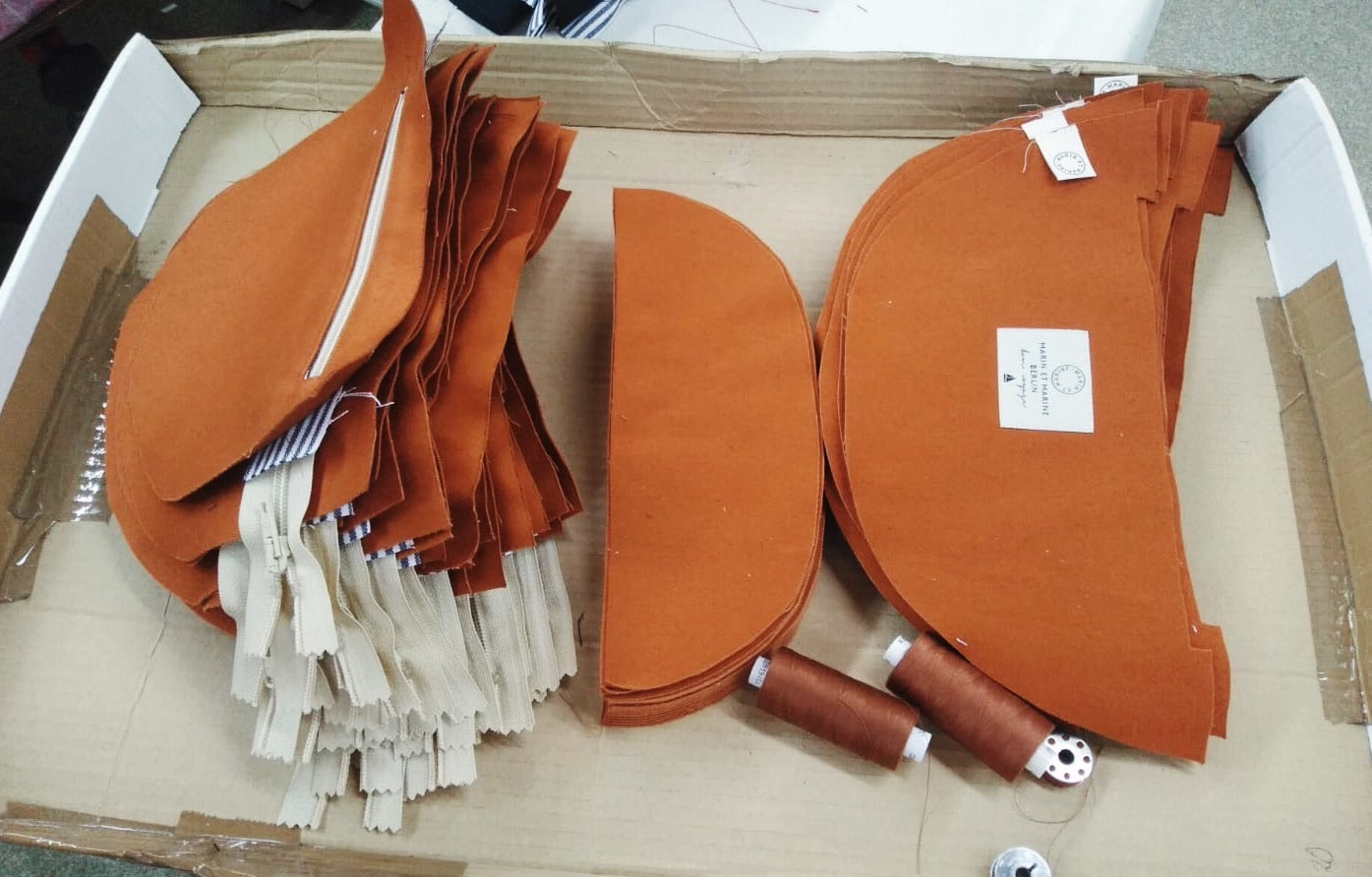
How do I properly care for my leather bag?
Here you will find helpful tips on how to wear your leather bag for a particularly long time.

We use completely natural vegetable tanned cowhide for our leather bags. The leather is firm and stable and has a very nice patina. It is estimated that only 10% of all leather is vegetable tanned . The active ingredient in vegetable tanning are tannins, so-called vegetable tannins from various plant species, which can be used to produce tannins.
Leather is a byproduct of the meat and dairy industries. Leather production does not drive livestock production. Cattle are raised for meat and milk, and the animal's skin represents very little of the animal's value. Inevitably there will continue to be hides as by-products as meat and dairy consumption continues to increase. Which we don't approve of, but if this renewable resource is not converted into leather, it will likely be discarded. The production of leather seems to us to be a solution to this problem rather than the cause of it.
Why do we use vegetable leather? Other forms of tanning produce environmentally harmful substances such as heavy metals and salts, which end up in water bodies and the environment both during production and later disposal. Nevertheless, chemical processes are preferred by most producers. This is mainly because they are faster and use more materials.
Vegetable leather is a purely vegetable and natural tanning process. After tanning, the leather is not processed further - no synthetic substances are added to make it more durable. This allows the material to breathe and reveal its natural beauty.

A well-treated leather becomes more beautiful and unique over time. To extend the life of your handbag, we recommend waterproofing it with a product, whether that's beeswax or simple waterproofing spray. Natural beeswax keeps the leather very supple. We recommend one or two treatments a year. Waterproofing spray needs to be used frequently, we recommend every 3-4 months. However, the nude leather doesn't like rain . When it rains, protect your leather bag as best you can under an umbrella or your jacket, because vegetable tanning makes the leather more sensitive to water stains.
If stains occur that you don't find attractive, please treat the leather with a special soap, so-called saddle soap . However, only use the soap on leather that has previously been generously treated with beeswax and is already really nice and dark and has a lot of patina. Because the leather soap makes the leather darker overall. If you only have small, mini stains, it is better to rub again with beeswax (this will make the leather more even) before you actually use saddle soap.
If you do have to use soap: apply a tiny amount of soap to a slightly damp sponge and rub it into the leather and clean it. This does not remove the stain directly but makes it less visible, overall the leather is well cared for and the unwanted stain is therefore less noticeable. Under no circumstances should the sponge be too wet! Otherwise unwanted water stains will remain. After a day, please rub it again with beeswax to care for everything evenly.
Prolonged contact with a strong light source, such as sun or artificial light, can change the color of the leather over time. We find the authentic patina and darker color that this gives the leather particularly pretty. However, if you want to leave the leather light we recommend placing your bag in a dust bag when not in use. We also recommend that you fill it with paper or fabric so that it retains its original shape. Additionally, avoid damp areas.
We decided to process leather because we inherited leather bags from our grandparents from the 1970s, which look particularly beautiful decades later thanks to loving treatment.






